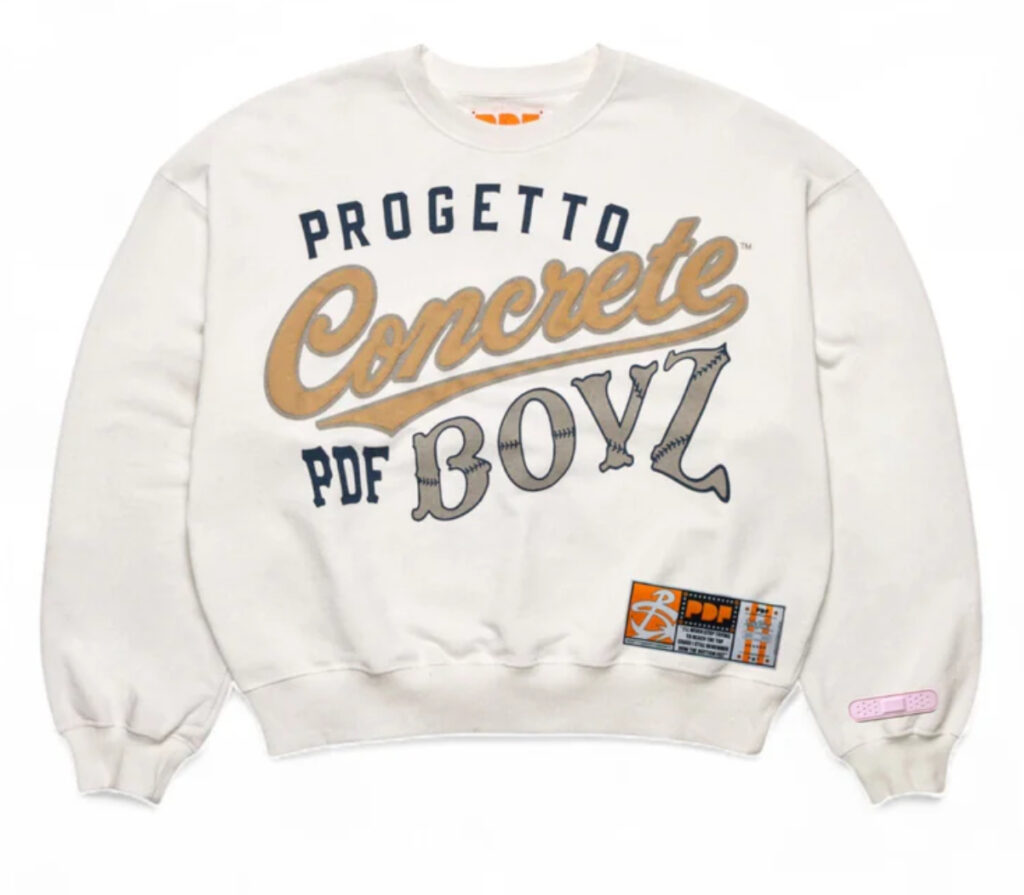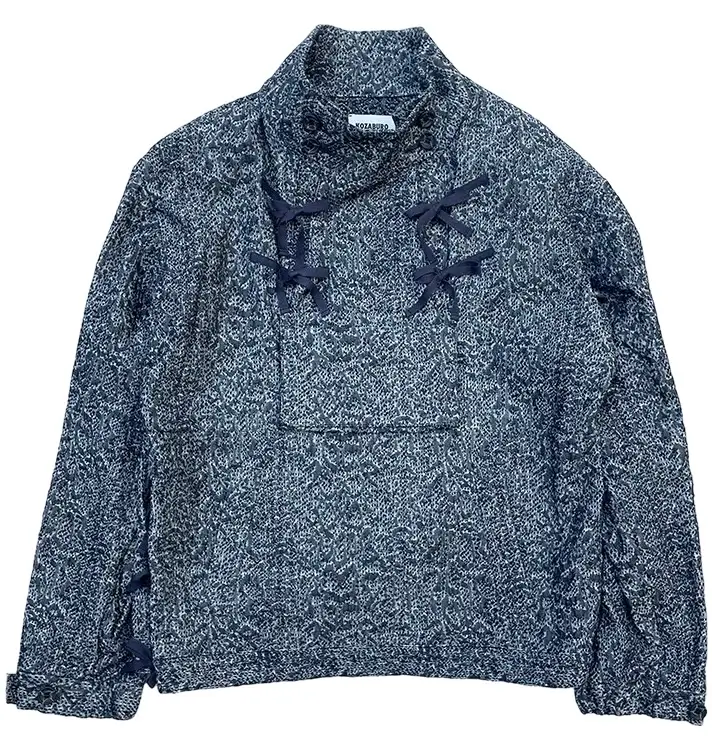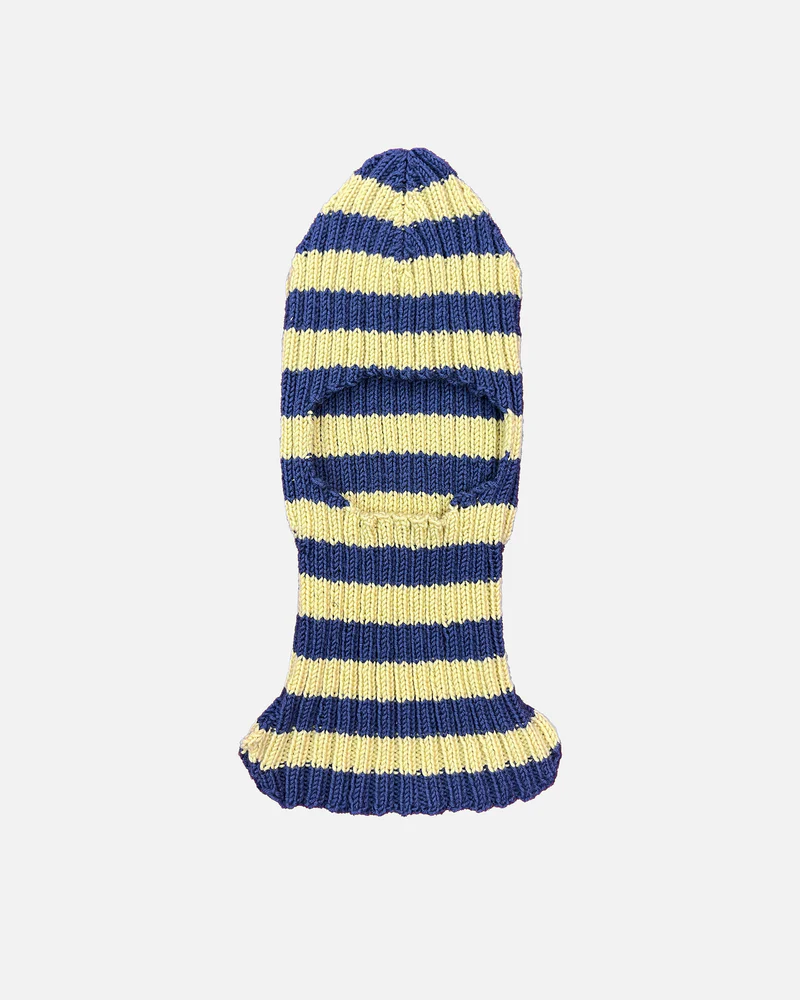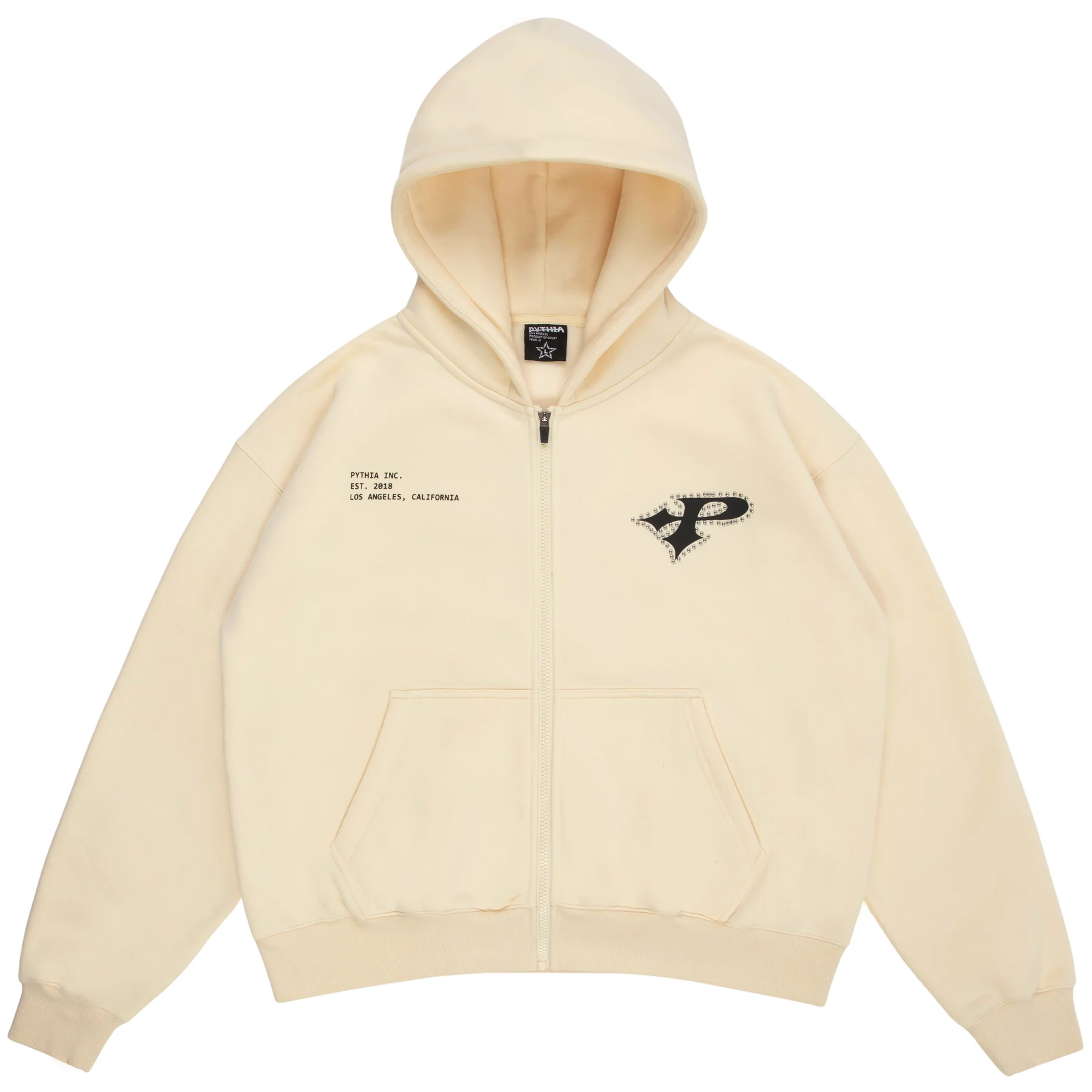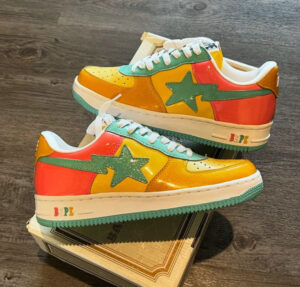In the era of digital maximalism and identity fragmentation, few streetwear imprints manage to carve out an authentic cultural niche that aligns seamlessly with a larger artistic movement. Concrete Boyspdf, the enigmatic brand extension of Playboi Carti’s sonic and stylistic world, is one of the rare exceptions. With the release of its PCB Crewneck in White, the label reinforces its commitment to constructing an aesthetic that’s at once defiant, cryptic, and reverent to a new canon of rap-star surrealism. Far from just another drop, this piece functions as wearable ephemera in the mythology of Whole Lotta Red and the gothic cloud Carti drapes over today’s rap consciousness.
Material as Message
At first glance, the PCB Crewneck in its minimal white offering seems to stand in stark contrast to Carti’s typically anarchic and esoteric fashion signals. But it is precisely in that quiet contradiction that the garment finds its voice. Rendered in heavyweight cotton with dropped shoulders and a boxy, draped silhouette, the crewneck adopts the form language of ‘90s skate and bootleg merch, yet its posture is distinctly modern—less mall-core, more moodboard.
Concrete Boyspdf doesn’t merely sell fabric. It sculpts persona. The choice of a clean white base serves as a blank stage for projected identities, fandom, and cult alignment. In a culture obsessed with logos and maximalist branding, Concrete Boyspdf keeps its iconography minimal but loaded. “PCB” isn’t just an acronym—it’s a glyph, a sigil, a decoder ring for those who know.
The raised puff print PCB motif is printed just below the clavicle, as if a badge of initiation into a cryptic order. There are no slogans, no exclamatory stamps of rebellion. Just careful, intentional placement—graphic understatement as attitude.
Uniform of the PDF Era
The acronym “PDF” in Concrete Boyspdf operates like an encrypted cultural metaphor. It may allude to the flattening of content in the digital age, or the ways in which our identities are exported, compressed, and shared as downloadable data. In that context, the PCB Crewneck becomes more than clothing; it’s a container file for self-mythology.
Concrete Boyspdf garments—including this piece—are less about seasonal rotation and more about collecting fragments of a larger cinematic wardrobe. Like Playboi Carti’s vampiric stage presence and distorted punk-trap production, the PCB Crewneck invokes an aura, not a statement. This is fashion as roleplay, as cult membership, as artifact from a concert that exists in your head, or perhaps in a Vimeo link passed around private Discords.
The unisex construction, oversized proportions, and emphasis on garment weight also echo the anti-gender, anti-fit energy of the underground luxury movement Carti helped canonize. It’s the kind of garment you wear under a hoodie in a dark venue or over a mesh top at a Paris Fashion Week afterparty. It doesn’t demand attention—it assumes it.
Inside the Concrete Universe
To understand the PCB Crewneck is to understand Carti’s broader architectural vision. Since the release of Whole Lotta Red in 2020, the rapper has engineered an aesthetic universe that fuses horrorcore visuals, cyberpunk affect, and industrial sonic palettes into a uniquely postmodern spectacle. Concrete Boyspdf emerged from this vision not as a merch line but as a material extension of the music’s conceptual DNA.
Every drop is low-volume and semi-anonymous, delivered with minimal fanfare but maximal resonance across fashion TikTok and niche archival Instagram pages. The garments operate like screenshots from Carti’s mind—a wardrobe for a character that exists in both a browser window and an underground rave.
The PCB Crewneck’s white edition reads like a reset. A palette cleanser in a visual world soaked with blood-red and acid-black. It’s the kind of item that whispers rather than screams, and it’s all the more powerful for it. Worn in the daylight, it destabilizes expectations; worn under stage lighting, it glows like a relic.
Material Details and Technical Language
Technically speaking, the PCB Crewneck boasts luxury-level craftsmanship disguised under streetwear silhouettes. The fleece-lined interior is soft enough to invoke loungewear, while the rib-knit cuffs and hem suggest durability, structure, and continuity. It’s designed not just to be worn but to age, to accrue scuffs and creases that become part of its biography. Much like a bootleg Morrissey tee or a tour-worn Raf Simons knit, the value is in the wear.
Size availability is typically minimal—another signal of exclusivity. The pricing, while premium, falls into the tier of boutique fashion rather than haute couture, making it accessible to both Carti’s high-end collaborators and his diehard fanbase lurking in late-night Subreddits.
What’s most compelling is that there’s no pretense of fashion week ambition. Concrete Boyspdf has no runway. No seasonal schedule. No marketing machine. Instead, it thrives on mystique, scarcity, and cultural penetration—distributed not through Vogue, but through selfies and bootleg fit checks.
A Uniform for Cult Participation
There is no such thing as “just a sweatshirt” in the Concrete Boyspdf ecosystem. To wear this PCB Crewneck is to align oneself with the project of myth-making through fashion, of translating sonic landscapes into textile ones. It’s not luxury in the traditional sense. It’s lifestyle performance—a soft armor for the emotionally armored.
In some ways, the PCB Crewneck is this era’s answer to the classic band tee. It codes allegiance without spelling it out. It’s a garment made for mirror selfies, for blurry photos in green-lit hallways, for flicks outside venues where the music is so loud the walls shake. But it’s also made for silence—for the kind of person who observes more than they speak, who knows the lyrics but never shouts them.
Cultural Significance and Longevity
If early 2020s streetwear was dominated by logomania, Concrete Boyspdf points to the future: an era of mystic minimalism, avatar aesthetics, and post-genre fashion. The PCB Crewneck in white is not just an object of style but a signal flare. It alerts those in the know, and remains opaque to the uninformed—a concept that would make Rei Kawakubo smile.
Years from now, this piece may hang in archival resale galleries, not just because of its visual appeal, but because of the moment it captures: a time when music, fashion, and identity collapsed into one .pdf, ready to be downloaded, zipped, and worn.
No comments yet.

